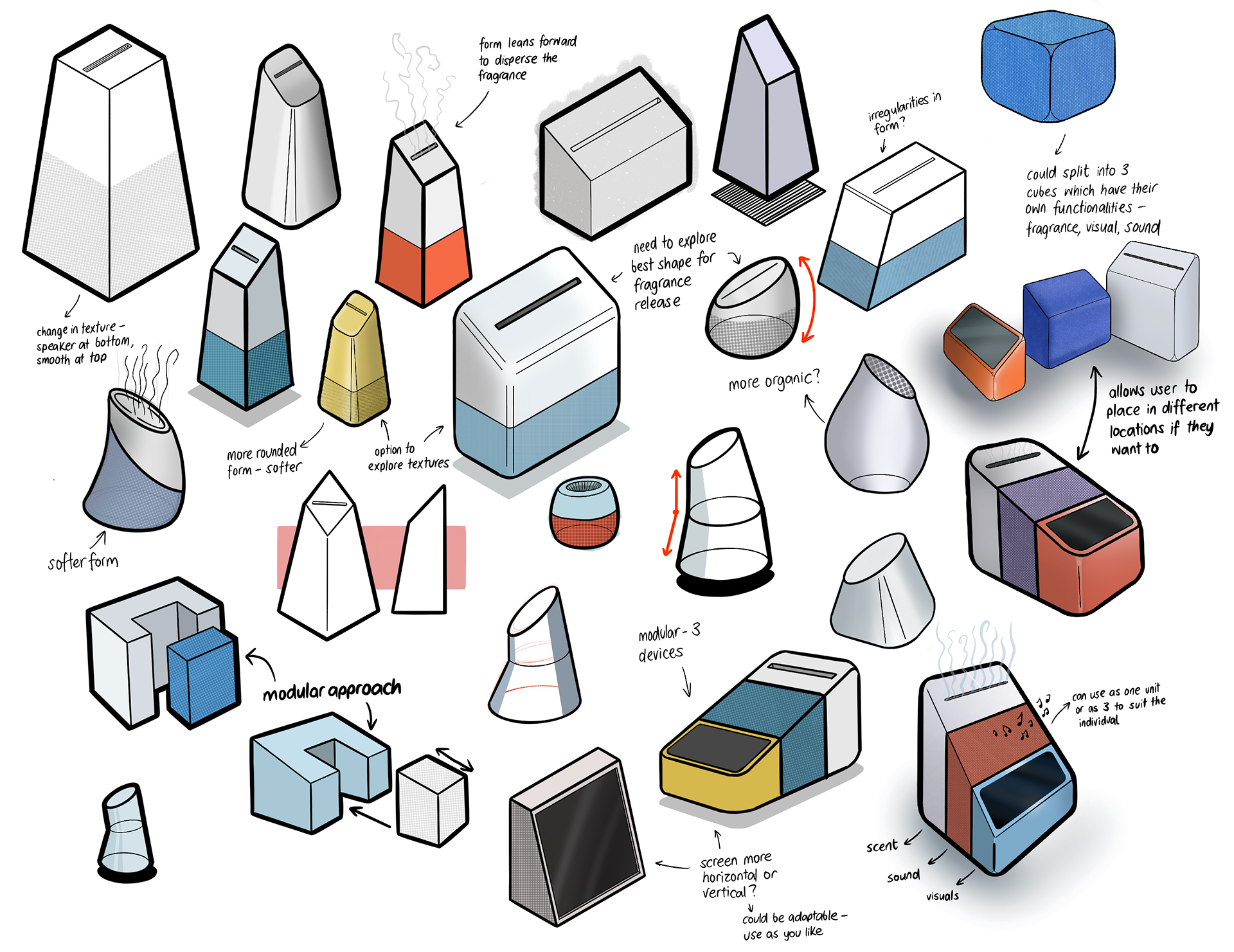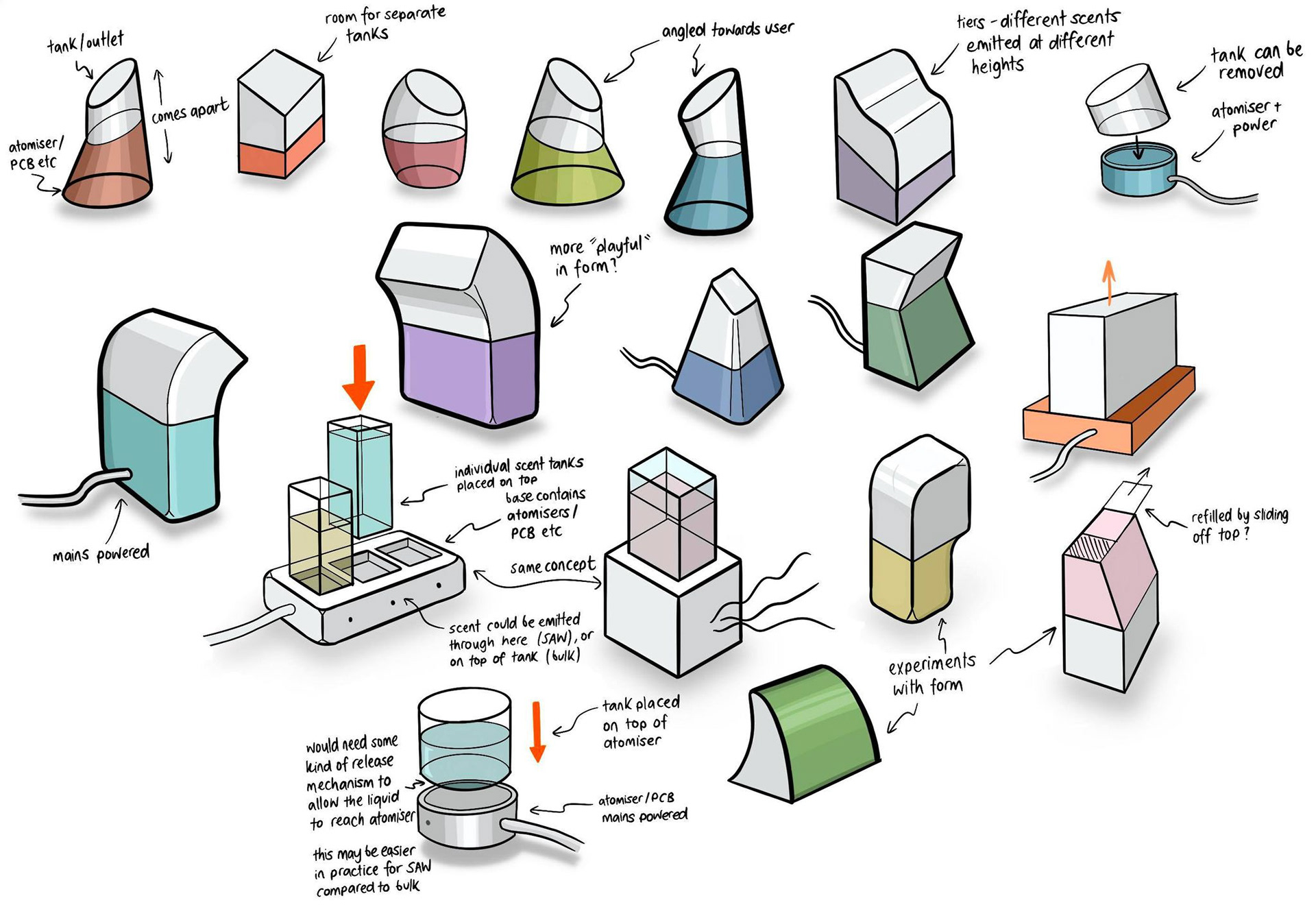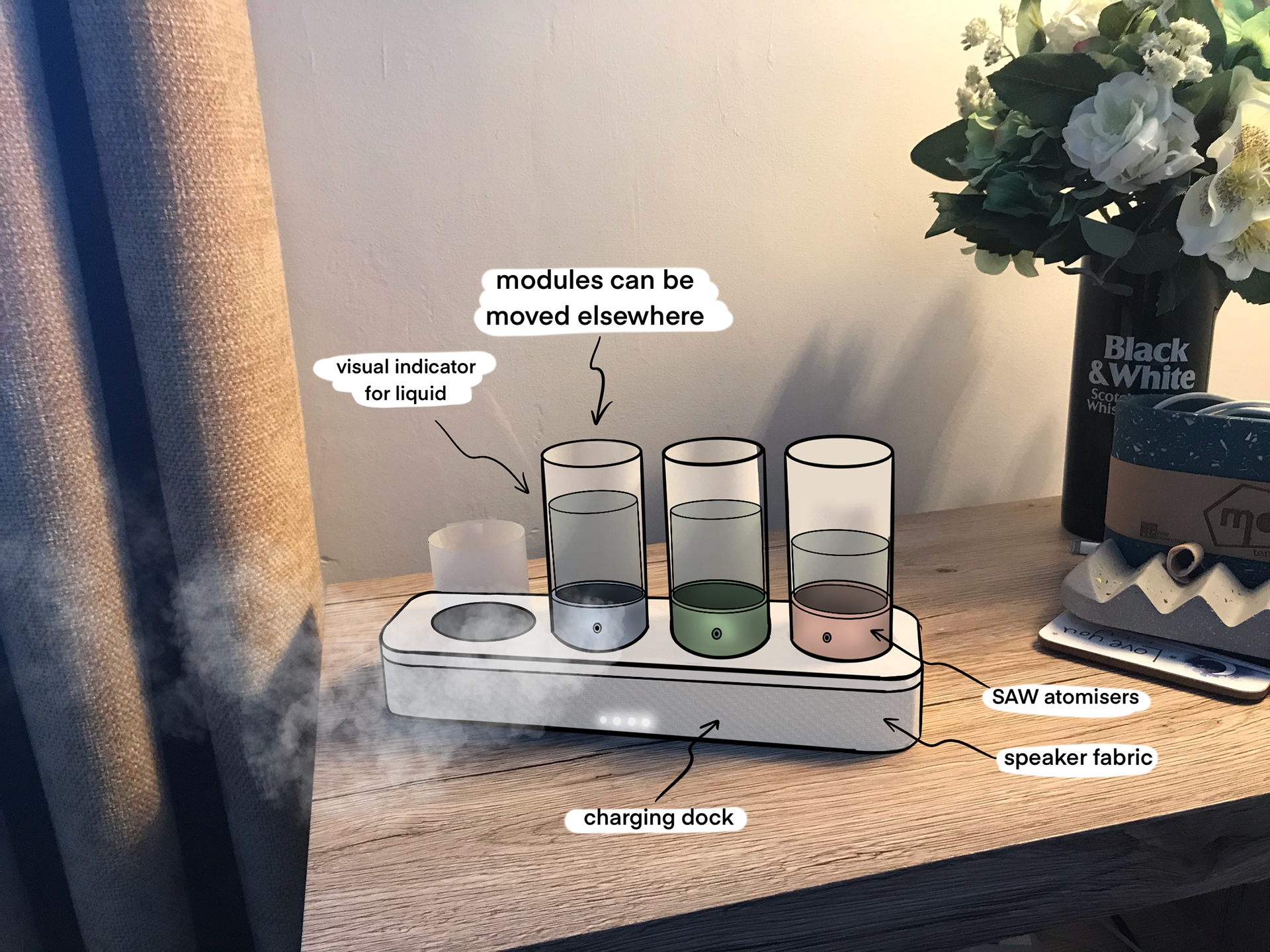My final year at the Glasgow School of Art consisted of a 7 month individual project in which I was tasked with creating our own brief to fulfil. This included desk research, user engagement, user experience design, concept generation, CAD design, materials exploration and Design for Manufacture.
Key Insights
A combination of desk research and user engagement led to three key insights that allowed my final brief to be synthesised.
1. Implicit learning is maintained in individuals living with dementia. Implicit learning is the process of learning a skill without awareness. The stages of learning are not linear within implicit learning, meaning people with reduced cognition can reach autonomy.
2. Sensory stimulation is highly effective for people living with dementia. Studies show that olfactory and musical understanding are preserved as dementia progresses. Therefore scent and music were selected.
3. Essential oils can provide further therapeutic benefits for people living with dementia. For example, specific essential oils can:
Exploring Form

2D Exploration

2D Exploration

3D Models with Overlay

3D Prototyping
Technical Development
Experiments and product teardowns assisted the technical development of the project. I carried out a range of experiments to derive equations for the optimum concentration, distance and volume of essential oil required.
This led to the final solution which features 4 individual mesh atomisers and utilises the concept of wicking.

Measuring essential oil concentration

Reservoir atomiser experiments

Mesh atomiser

Mesh atomiser on a damp paper towl

Wicking experiments
Refill Mechanism
As the product takes into account the whole journey of dementia, it is important to create an easy and intuitive method of refilling to allow people in the early stages of dementia to do this independently. However, it is anticipated that as their dementia progresses, a family member or carer may start to refill the device on their behalf.
Earlier concepts involved the user having to lift the top section of the product to place the Scent Pods in through the base, however the weight would be at least 500g which could be challenging for some users to hold up. A hinged lid was developed to allow easy access to replace the Scent Pods, whilst not requiring a high degree of dexterity.

Concept sketch

CAD Development

CAD Development

Final user journey
Design for Manufacture
Ensuring longevity of the product to allow it to be with the user throughout their journey was a key consideration when designing for manufacture. Therefore, all of the fastening mechanisms used are reversible (with the exception of the rubber base, which does not affect the functionality).
Standard parts were used where possible to simplify manufacturing methods and ultimately reduce cost. All custom parts were designed for injection molding. Note that the lid component requires side action, and the base components will be injection molded in two parts then ultrasonically welded to reduce mold complexity and cost.

Planning

Speaker Detail

Design for Manufacture
Recognition
Meaning Centred Design Award 2021: Shortlisted
Lexus Design Award 2022: Shortlisted
RS Components Student Project Fund 2021: Winner